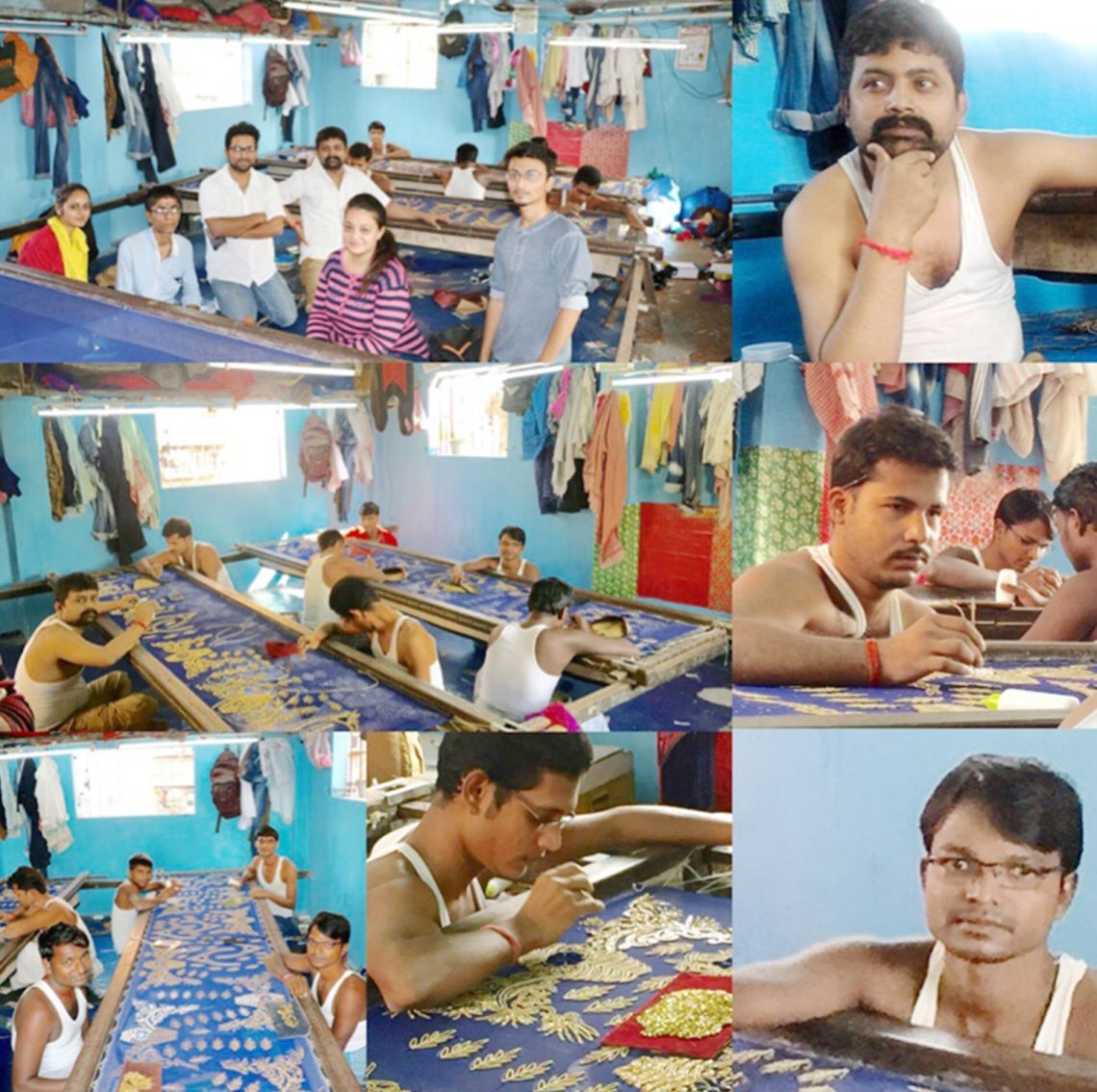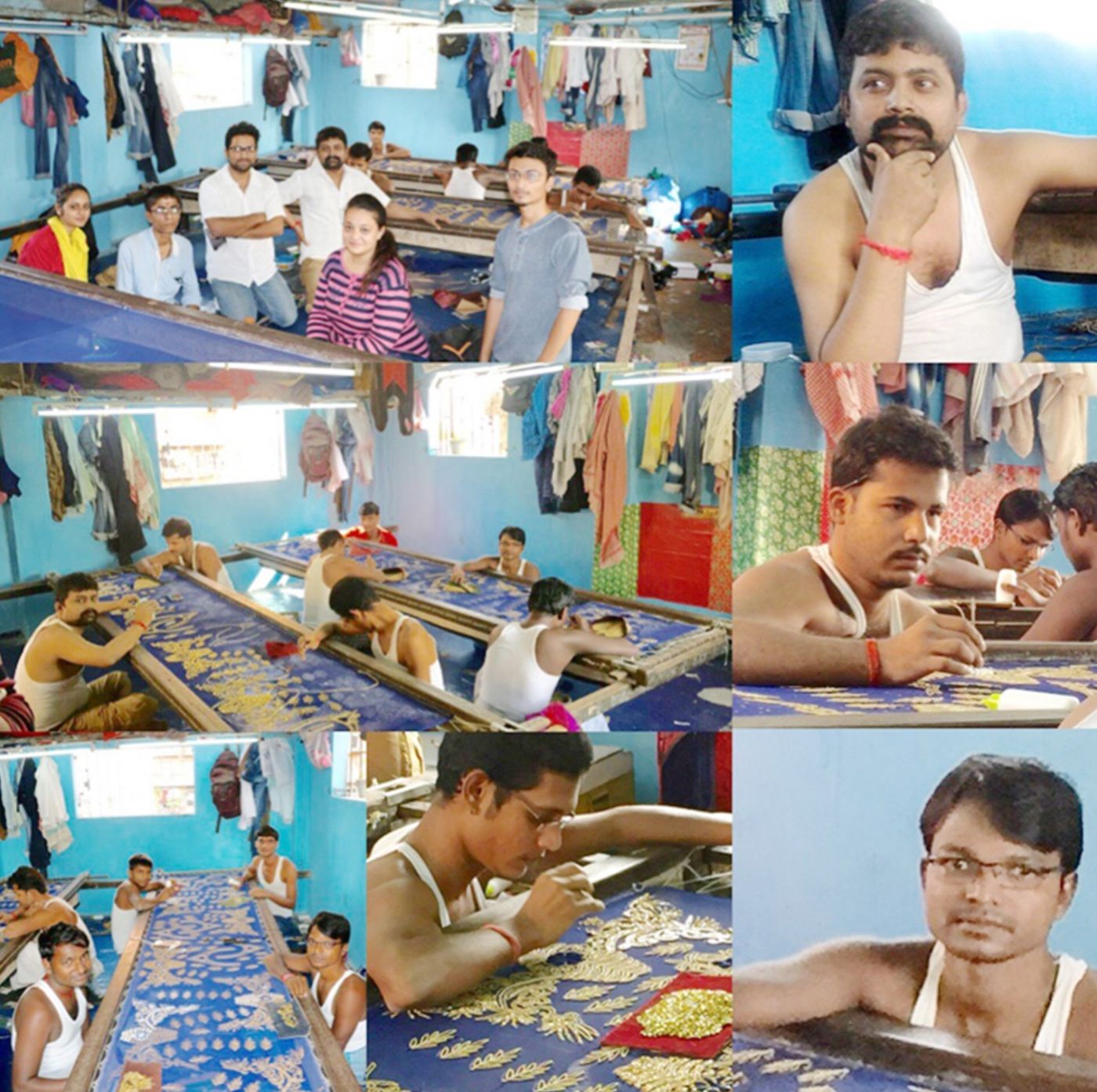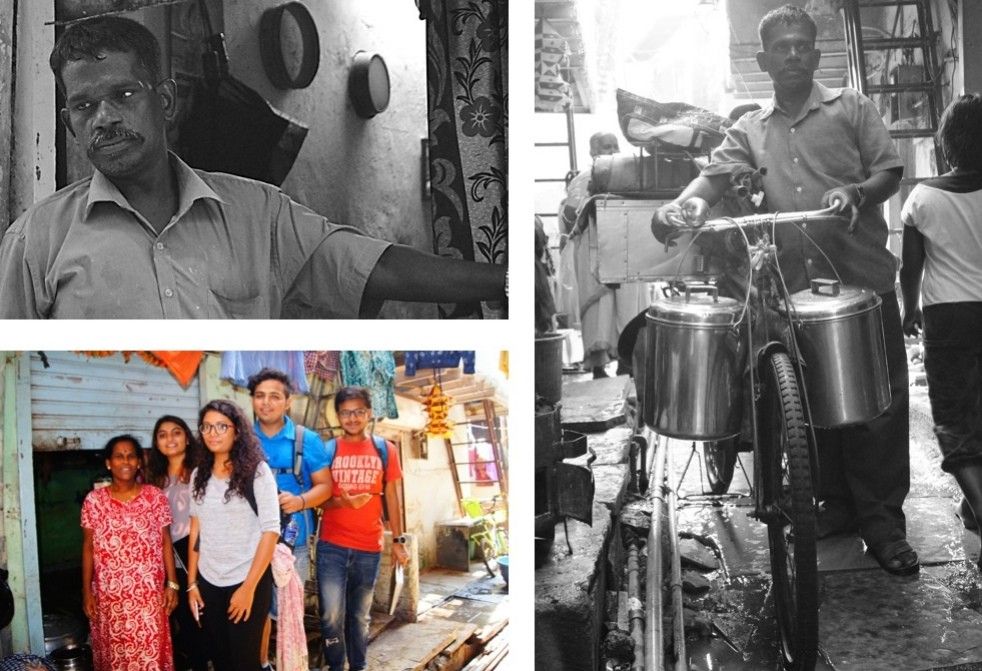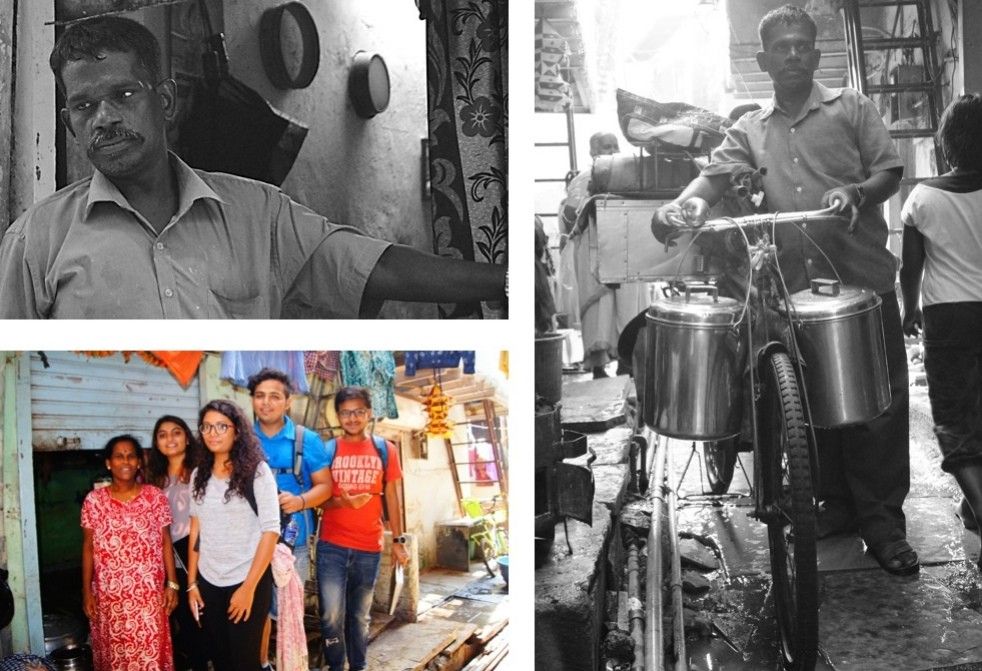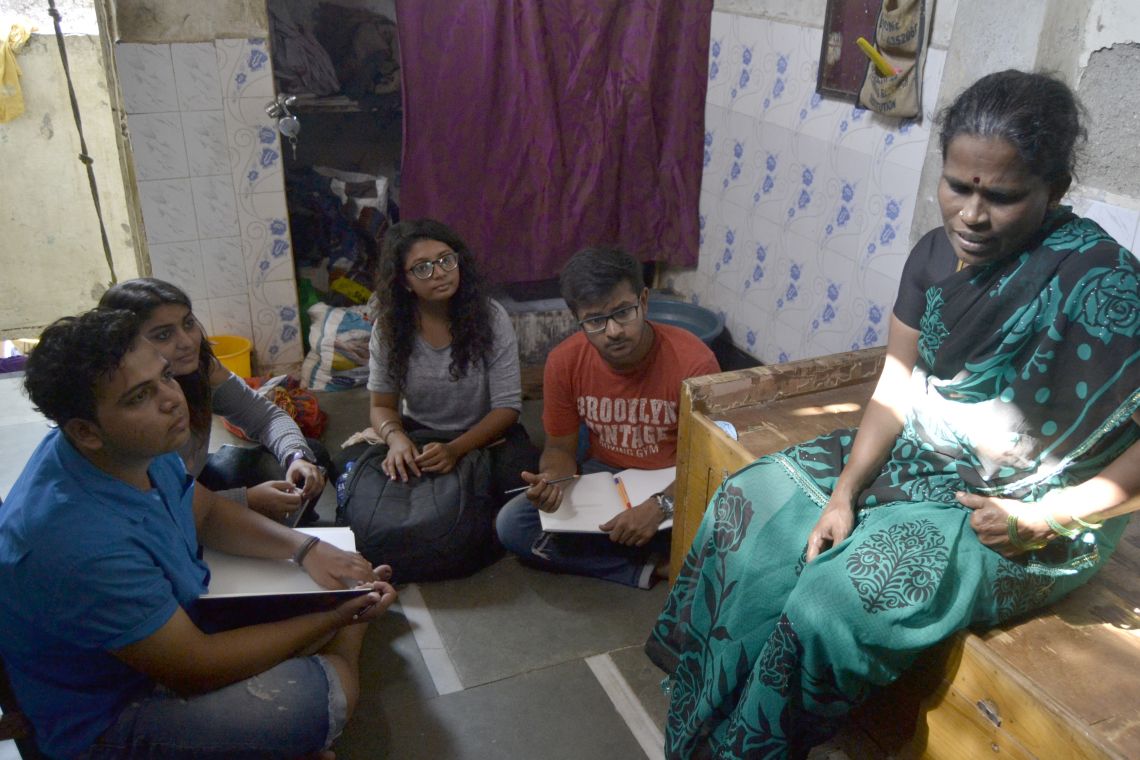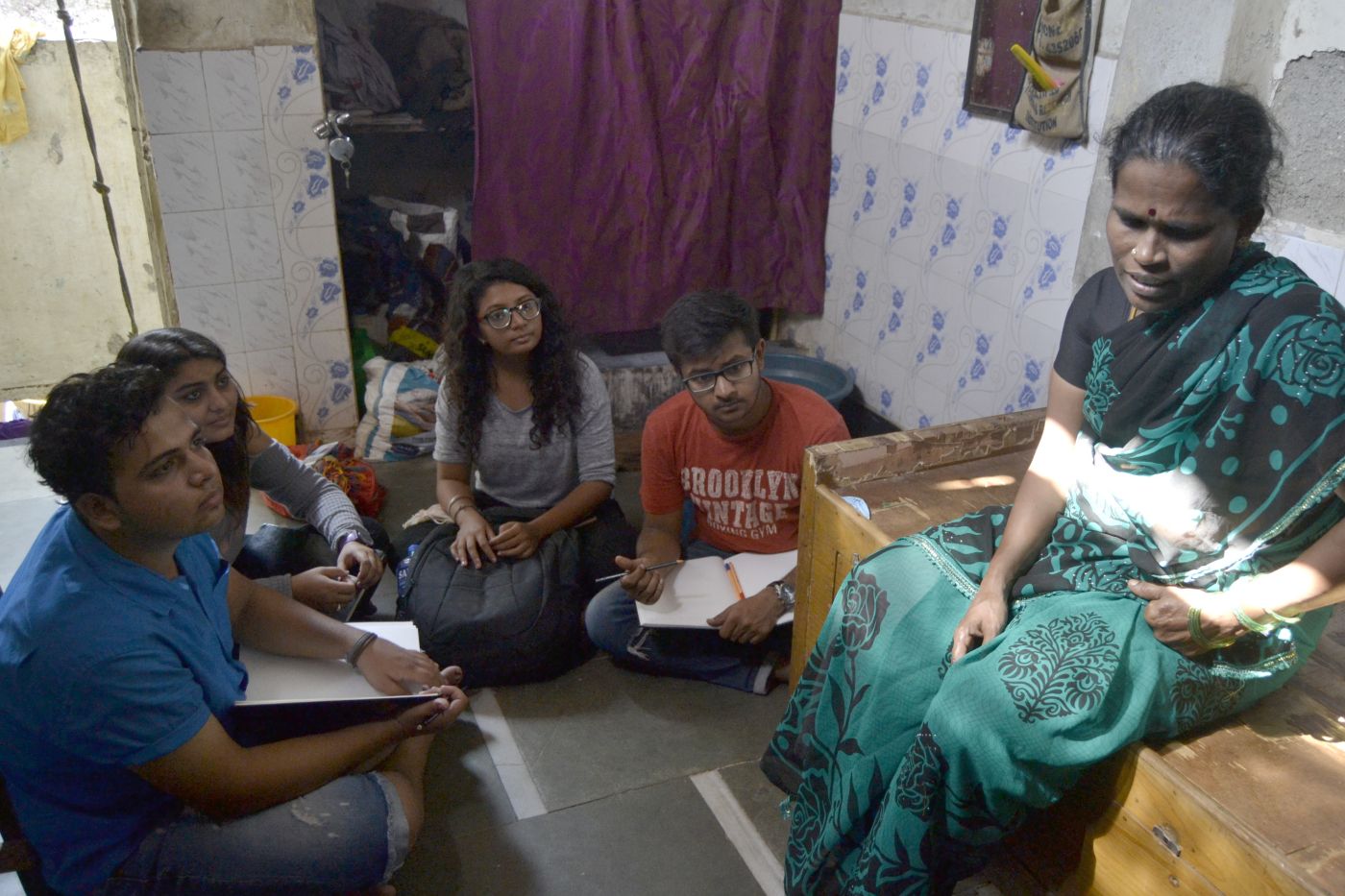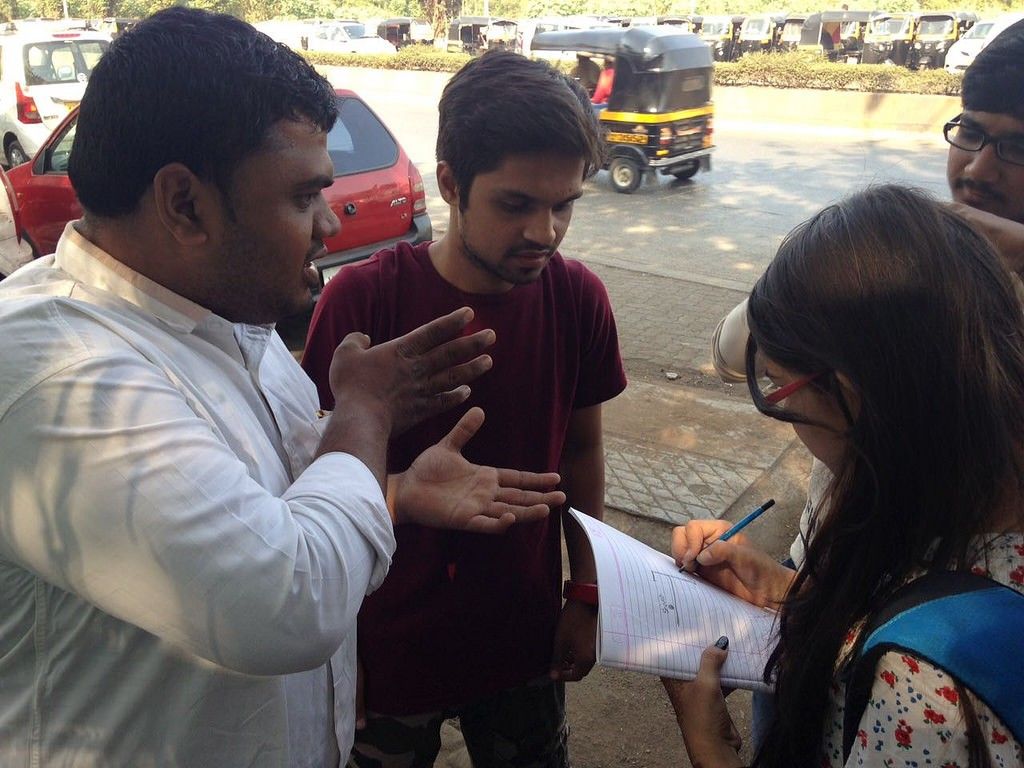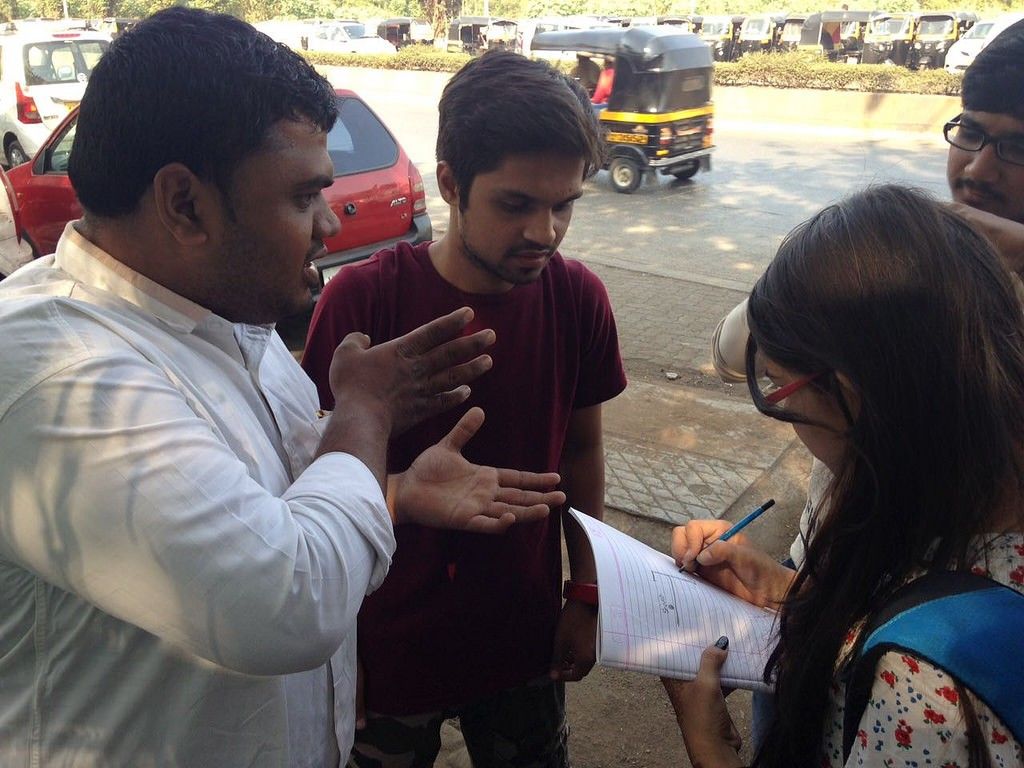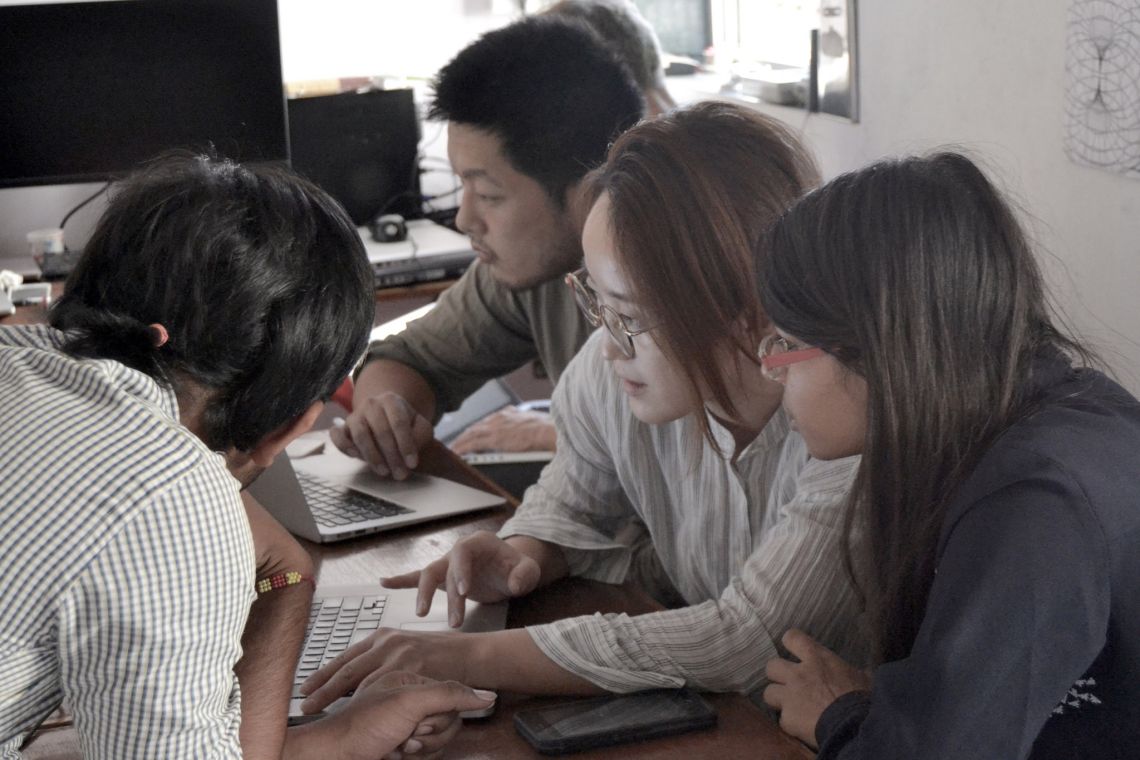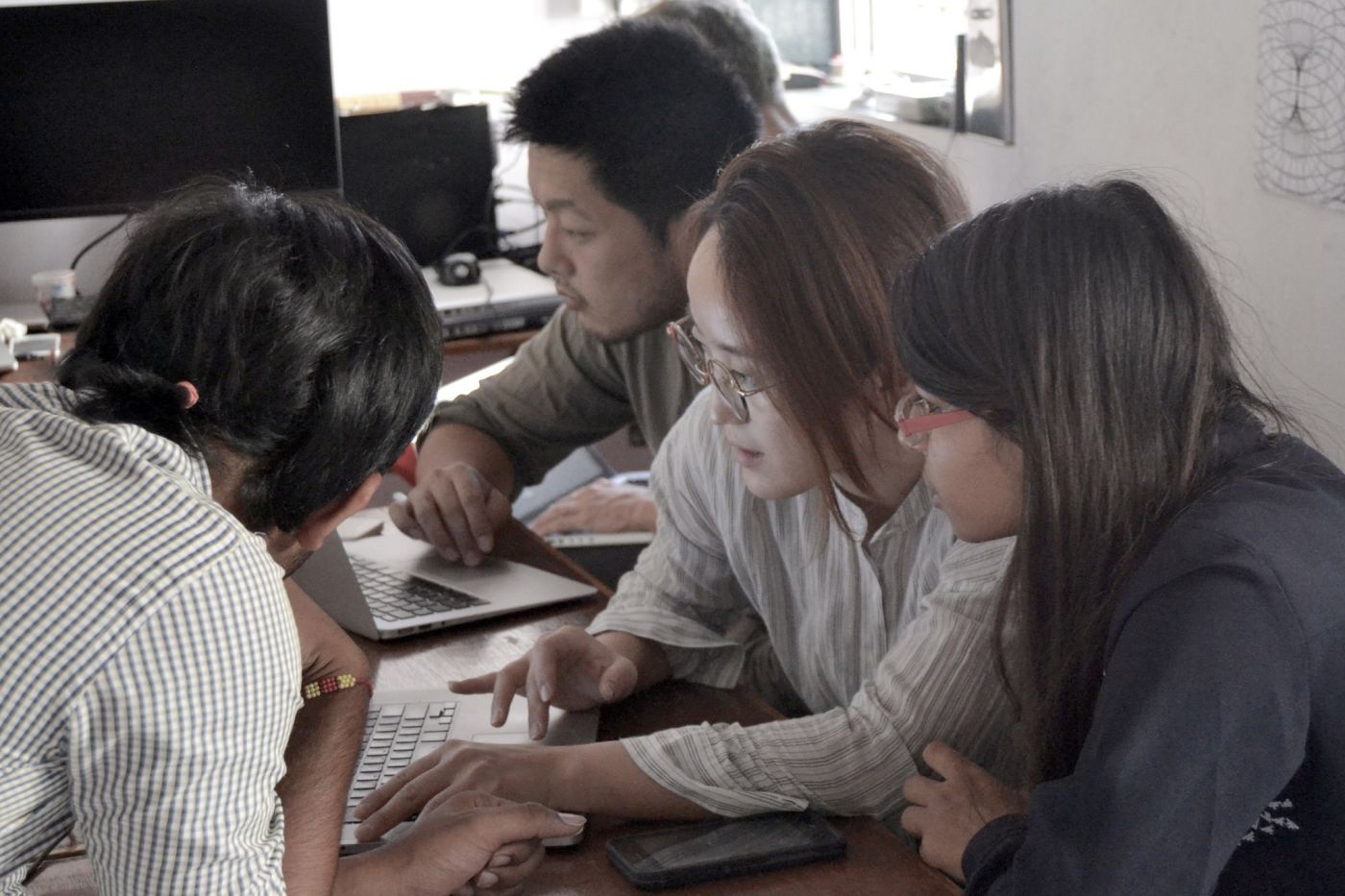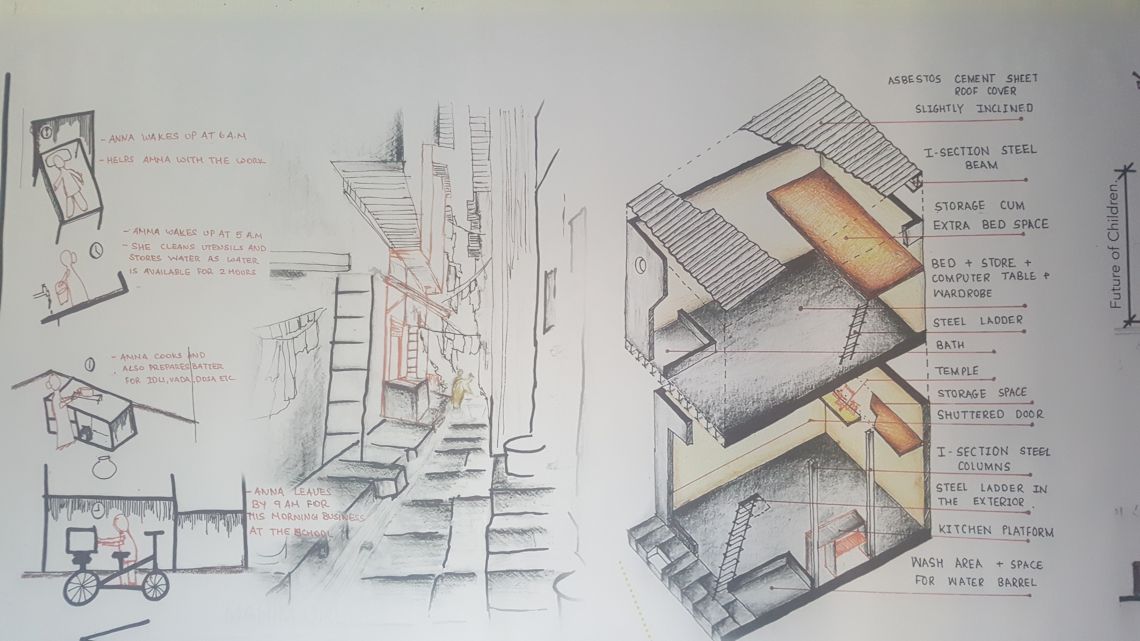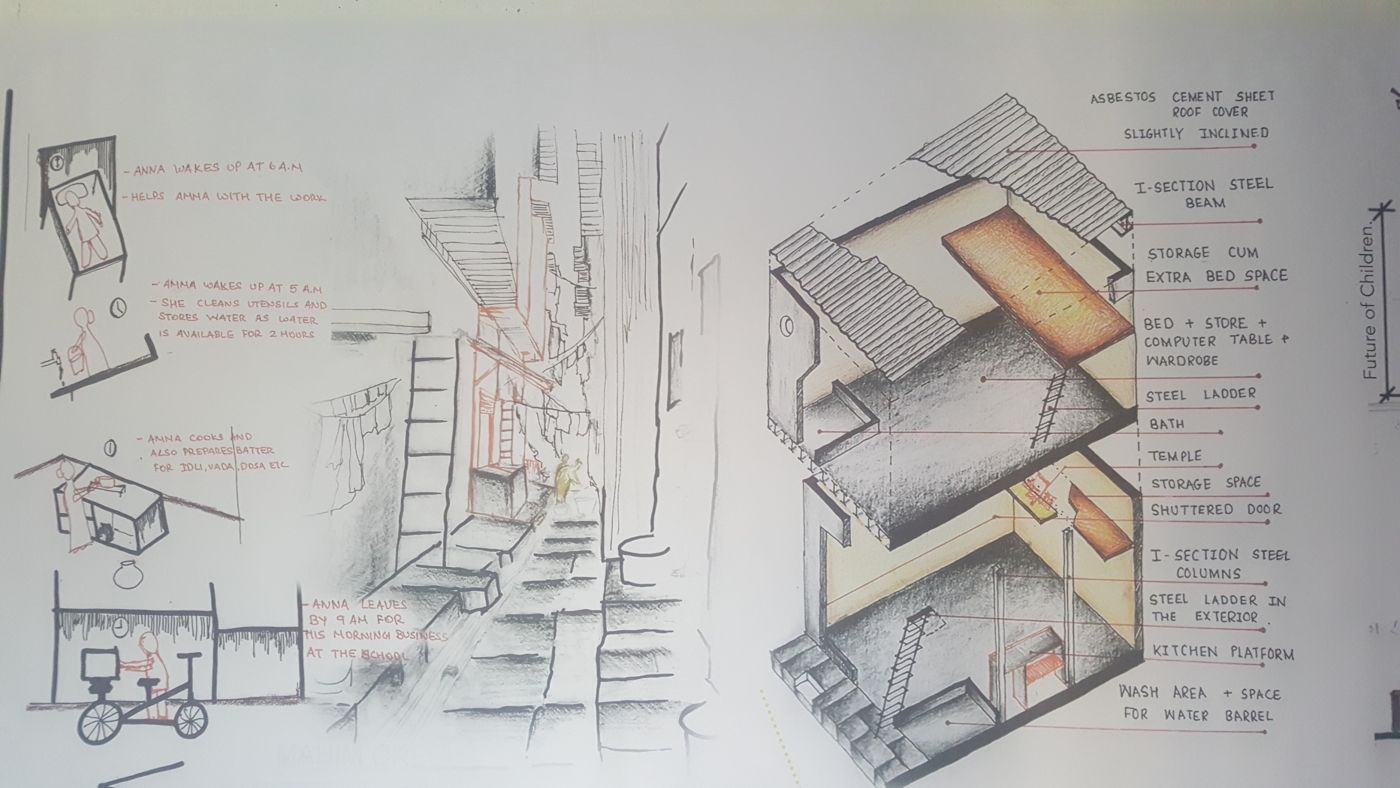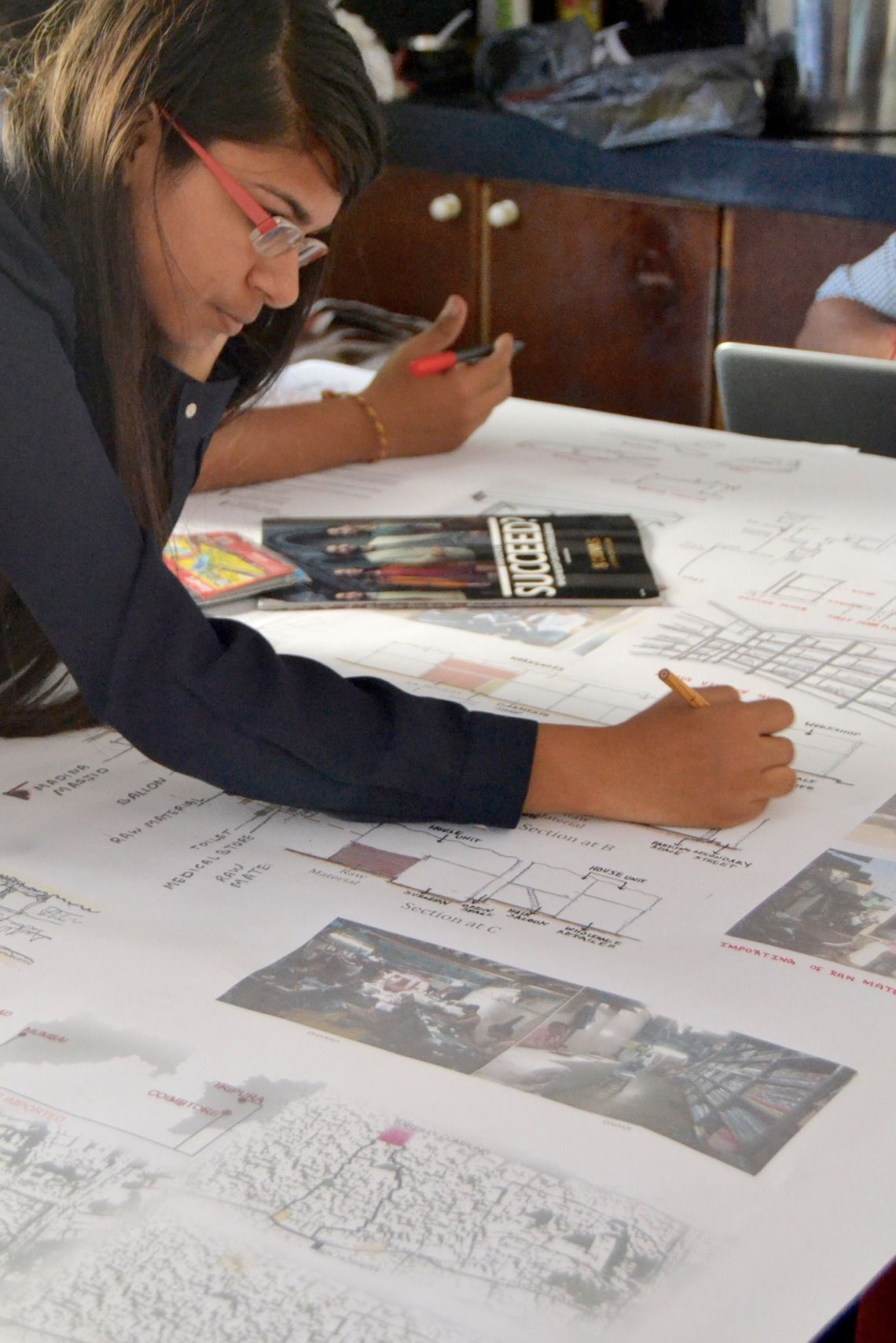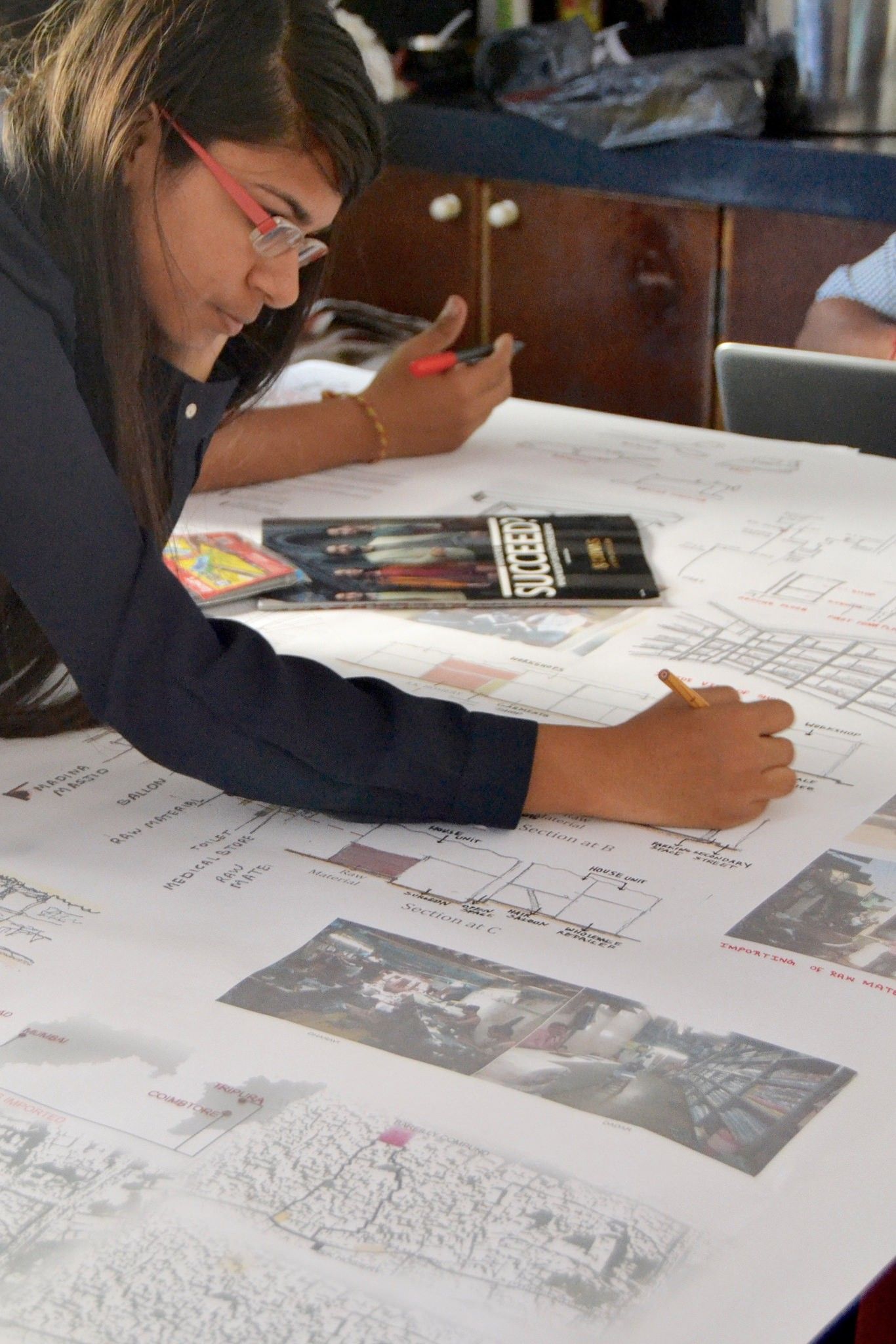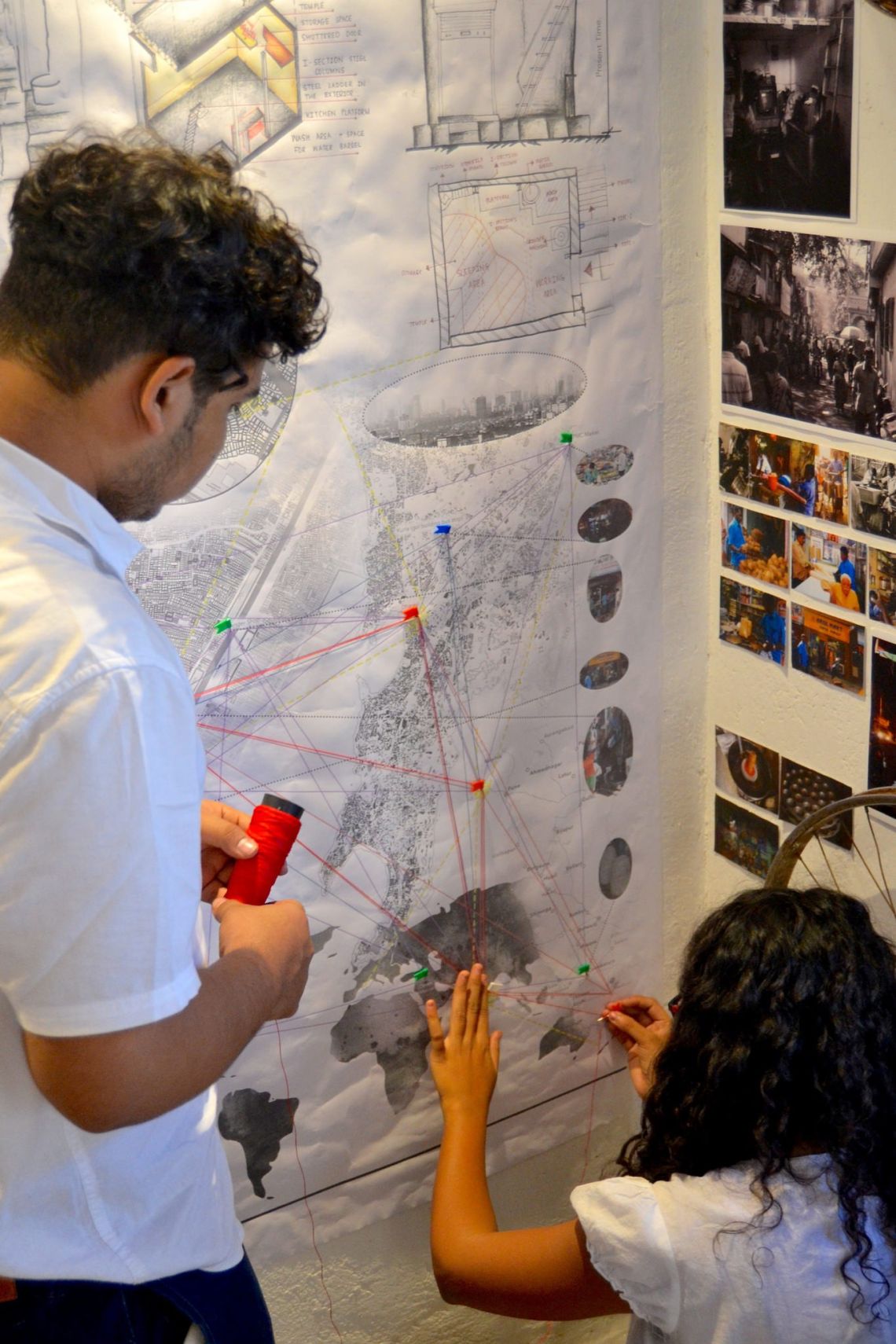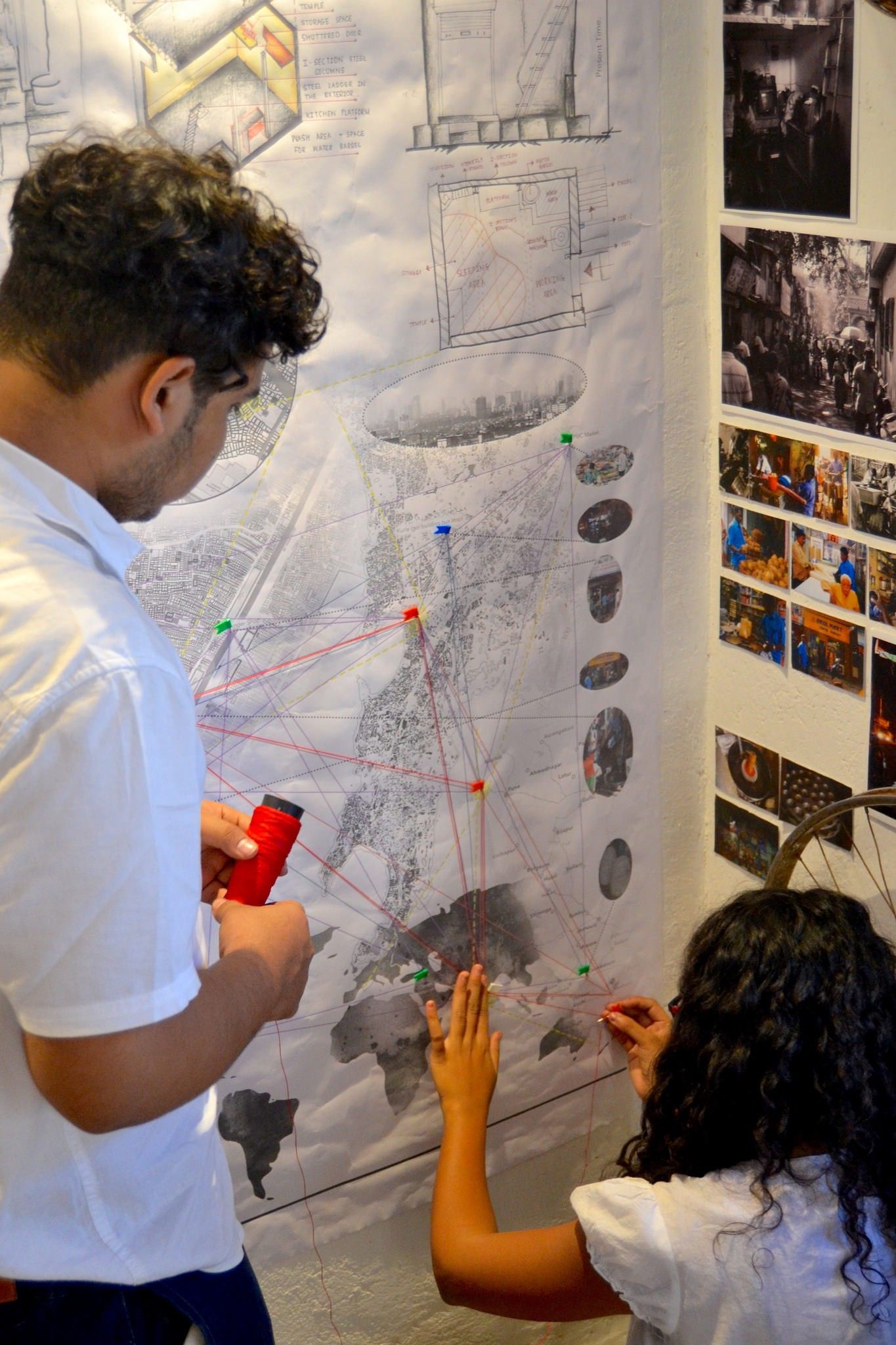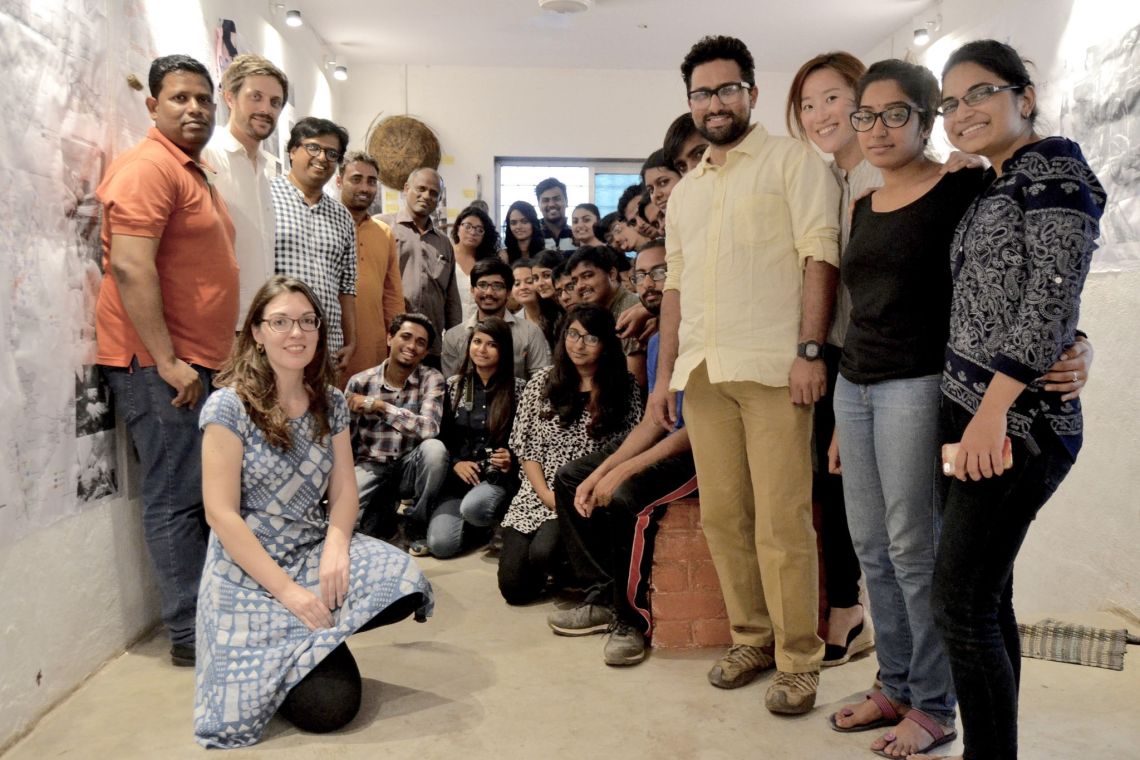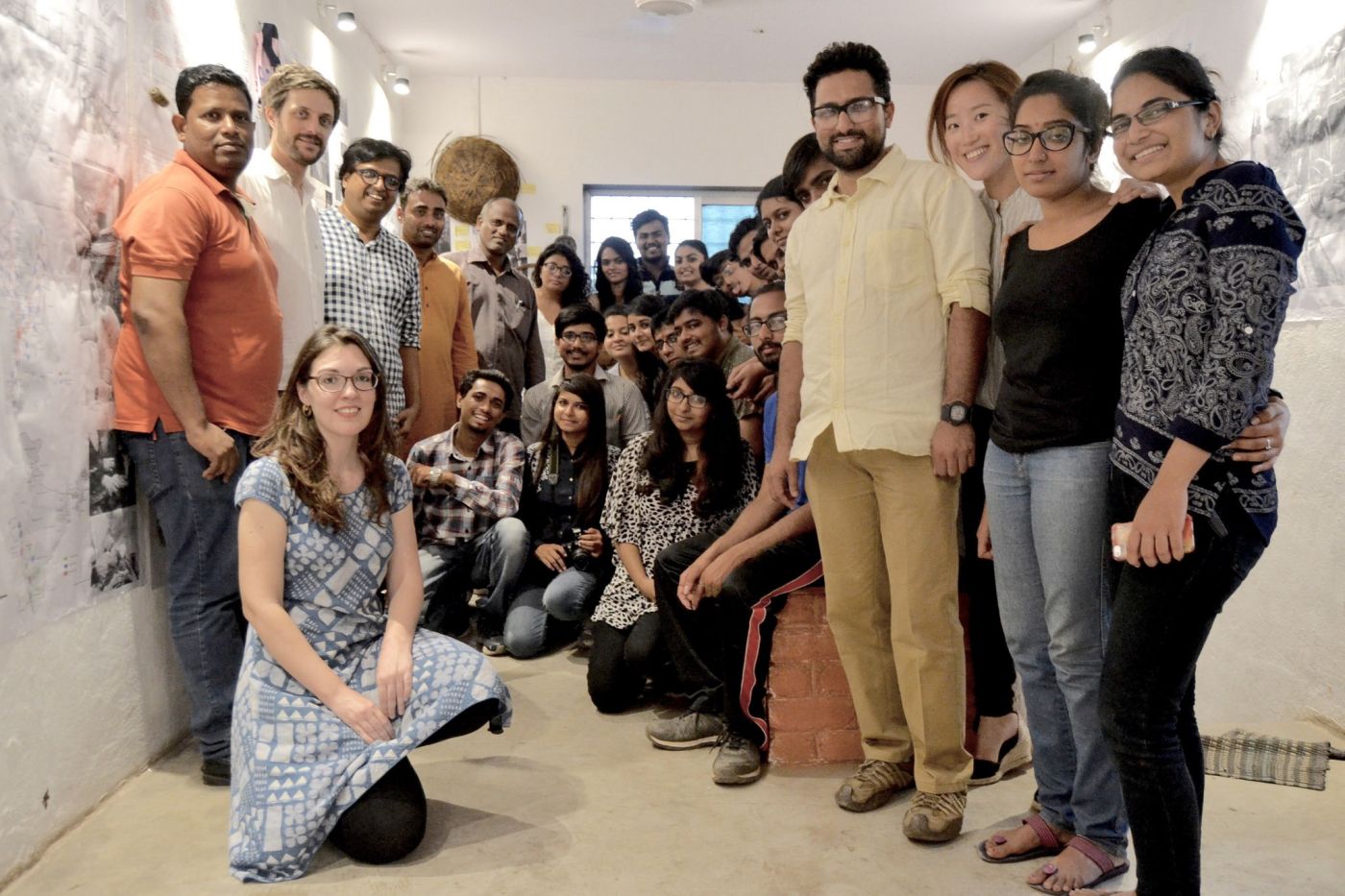Scale Up/Scale Down: Working with Objects, Places and People

Scale Up/Scale Down: Working with Objects, Places and People
24 young to be architects from SAL University, Ahmedabad, spent a week with urbz to explore and understand the Dharavi context. Both wary and curious about the baggage the settlement carried, widely and wrongly branded a slum, the students started out with some scepticism about the workshop. At the same time, they had a genuine curiosity about Mumbai city as a whole. A large number of the students had come to Mumbai for the first time, which was a bit surprising considering they belonged to the neighbouring state of Gujarat.
Scale Up/Scale Down: Working with Objects, Places, and People was ideated to explore the different scales of a subject transcending time and place. For architects, dealing consciously with scale is crucial as architecture has to frequently work in various simultaneous moments, especially in a fabric that is user-generated, like Dharavi. For example, the design of a newly built home has to keep in mind the growth of the family and the addition of more rooms or an added floor. Or, a house can be divided into spatial and temporal terms and have multiple uses, like working and living together at the same time. The workshop was planned to be a fun experiment for the students to discover Dharavi unconventionally. Dharavi is known for its cottage industries and manufacturing units. The reason that Dharavi thrives and flourishes despite its shortcomings is the economic turnover that it produces yearly. urbz identified six families involved in characteristic Dharavi businesses: leather, idli, broom-making, embroidery, garments and papads. The students could then explore Dharavi through its businesses, a field whose language any Gujarati speaks fluently!
19.0402084, 72.8508504
T-junction, Dharavi Koliwada, Mumbai, India
On the first day, each team was given a clue with a name and an address. The students started out eagerly, each wanting to be the first to arrive at their destination. In the process, they moved around Dharavi, asked for directions and by the time they arrived at the house of their respective family, were already familiar with the neighbourhood. The teams were encouraged to interact with the families, ask them about their roots, their lives in Mumbai, their livelihood and focus on unearthing each family’s’ story while documenting everything they saw and heard. What was most impressive is the speed with which they navigated the neighbourhood. With the help of GPS and their social skills, all the teams found the houses extremely quickly, considering the maze of roads that makes up the neighbourhood they were visiting for the first time.
Through the course of the week, the teams became familiar with the neighbourhood and the stories of their assigned families. After climbing two steep ladders to reach their unit, team Embroidery were surprised to find that the entire business ran out of a small room which the workers also used for sleeping. While documenting the structure they realised that live-work conditions are good solutions for businesses in Dharavi because of the all-day utilisation of space and the economic benefits that come with it. Team Idli discovered that idli vendor Ammavasai’s family also operated out of a ‘tool-house’ where the ground floor was where the parents would store their raw material, prepare the batter, make the idlis and also sleep while the top floor was left for the children to forge a new path. Ammavasai’s bicycle was the crux of their story as it transforms into a mobile idli stall across Mumbai everyday. The Garment Team learnt that in Dharavi the spatial arrangement of buildings allowed for entire businesses to run out of a single unit; retail showroom in the front, storage at the back, workshops and living space on subsequent floors. Team Papad made interesting connections of their woman entrepreneur’s life with Patrick Geddes’ interpretation of the key units of society: Work, Place and Folk. Mapping her activities through the day, they found that papad woman Rekha Gade takes care of the household, goes to other parts of Mumbai to buy the material for the papad, makes the papad from her home and uses the tree right outside as her ‘shop’ from which she earns an additional income to support her family.
Every team realised that the business they were studying had a large footprint, one that extended beyond the confines of the neighbourhood. Team Papad discovered that papad, while laid and dried in Dharavi, is prepared elsewhere in Mumbai and occasionally sent somewhere else for processing. Team Idli followed their idli-wallah to Kurla to compare the business inside and outside of Dharavi. The leather and broom teams found links from the Dharavi unit to Karnataka and even Dubai. Some networks, like in the case of the Garment Team, led them back to Gujarat!
The idea behind Scale up/Scale was to pay attention to how specific objects in the house represent larger relationships. For example, objects of daily use like the bed, the cupboard, the child’s study table or objects of exchange, such as food, clothes and tools made or consumed by people often form the heart of households. At the same time, the house is embedded and networked with the street as a whole with people sharing walls, access streets, water, sewage, drainage pipes and electricity wires all of which are part of larger urban grids. The world from the outside can be omnipresent in the house through transport and communication networks – or embodied in the person who moves all over the neighbourhood and city and beyond for work or leisure. This is possibly the most important lesson we learnt from the workshop – Dharavi has strong ties not only within its boundaries but ones whose sphere of influence extend to the rest of the city, the country and often to various different parts of the world.
The workshop also provided the students with a platform to display their stories as their first public exhibition at urbz’ own gallery. Having invited all of the families with whom they had spent an entire week, the participants were hard at work to show all the material they had collected. Some even borrowed personal objects from the families and put it on display. Pictures, selfies, explanations carried on through the night. There seemed to be a sense of pride at having successfully exhibited all their work to the families that they had been intricately involved with over the past week.
‘So, what do you think of Dharavi now?’ we asked the students on the last day. ‘I always imagined that Dharavi was a scary place. It’s not like that at all’, said one. ‘It was surprising to find that the families we interacted with have the same dreams and aspirations as us’, said another. Steering away from the typical architecture workshop which deals with building design and construction, the workshop pushed the students to think beyond the building unit and explore the networks that its activities create. Most importantly, the workshop busted preconceived notions of Dharavi, with the students promising to return for part two.
